All good things come in threes : After I had a lot of fun with the compact loudspeaker Verus III Grand Bookshelf in January 2020 and a few months later was also able to test the Supertweeter from AperionAudio at a profit, I am now looking forward to the third test round with a floorstanding loudspeaker, namely the AperionAudio Novus T5 Tower. The Novus series is priced a bit cheaper than the more ambitious Verus series and consists of a floorstanding and compact speaker as well as two centers, a wall speaker and a ceiling spotlight.
First a look at the technology of the petite (95 centimeters high, just 13 kilograms) loudspeaker that can be integrated into almost any living environment: the Novus T5 Tower is a two-way loudspeaker with a bass reflex system. The latter is not an everyday feature: Instead of a classic, round, rear bass reflex tunnel, AperionAudio opted for a front-side sound guide in the form of a rather long (23 cm), vertical slot, which, due to its shape, is almost reminiscent of you Horn attachment goes through. As the reasons for this construction, the manufacturer states that on the one hand the shape of the bass reflex duct minimizes flow noise more efficiently than a classic “pipe”, and on the other hand the loudspeaker is more flexible in its installation due to the sound outlet at the front – as is well known, rearward-facing bass reflex openings can cause installation problems lead near the wall and corner.
For the low-mid range, AperionAudio has installed two parallel running 5.25-inch drivers (you will remember: This is how big the first floppy disks in home computers were at the time) with membranes made of aramid – a fabric that is also known under the name of Kevlar and that at is used by many well-known manufacturers. It’s popular with developers because it’s light and stiff, but also resilient. Not bad conditions for a discoloration-free reproduction of the low-mid range. A dome tweeter takes over from a crossover frequency of 2300 Hertz . Natural silk is the membrane material here, set in motion by a powerful neodymium magnet and a ferrofluid-cooled voice coil.
We also find a nice feature in the crossover network , namely the tweeter can be adjusted using a jumper. In the delivery condition, the bridge is plugged in and the tweeter plays neutral. If the bridge is removed, the high frequency range is lowered by 3 dB.
A scenario that I did not pursue after a short test because my room is adequately damped – but it can help a lot in acoustically “hard” rooms. The loudspeakers are wired via a single-wiring terminal of solid but not extravagant quality with terminals that are comparatively close together: if you want to be absolutely sure that you are not “building” a short circuit, you should prefer banana plugs to fork shoes.
Before we go deeper into the tonal details, a few words about the look and workmanship: It’s pretty cool what AperionAudio is offering here for a price of almost 1,400 euros. The corners of the housing are not only perfectly rounded, the sanding varnish was apparently also applied in several layers and, moreover, with great care: There are no visible edge transitions to disturb the overall picture.
The three drivers – placed in the manner of an d’Appolito arrangement – are not only perfectly fitted into the front, but also neatly veneered. Nevertheless, the screws of the cone loudspeakers are easily accessible, the panels are made of easily flexible rubber. Last but not least, AperionAudio supplies simple but stable crossbars with a set of rubber feet and spikes each. The overall appearance and the quality of workmanship certainly raise expectations. Let’s see if the speakers can do it.
AperionAudio Novus T5 Tower: Sound impression & comparisons
I primarily operated the AperionAudio Novus T5 Tower via my transistorized Abacus Ampollo Dolifet , the CD player CEC CD 5 and the streamer HiFiAkademie Stream6-mini in conjunction with a Tidal HiFi subscription served as sources . In a second listening session, I replaced the Abacus Ampollo Dolifet with the Tsakiridis Aeolos + , a thoroughbred tube amplifier. It should be said in advance that both amplifier-speaker pairings worked well. Let’s go into detail.
And that’s not that easy at all! The introduction to the paragraph you are reading has been discarded several times, started again, changed, deleted again – and so on. Because this loudspeaker refuses to make any airs, no matter in which audiophile individual discipline you want to find out about it. You know it yourself, many hi-fi devices have a certain sonic “tendency”, some even have a clear focus: There are the woofers or tweeters that turn on crazy the first time you listen – and start to get on your nerves after a week. There are room washlights that allow you to take a bath in music, but may be tonally inconsistent. There are the analytical dissectors, where you can hear every blade of grass growing, but are not emotionally taken with you. And of course there are also the flatterers and beautiful artists, who then withhold one or the other detail from you. The AperionAudio Novus T5 Tower is none of that. Is that why it has no attributes or is it even boring? Not, on the contrary. Let’s try an approximation using classic hi-fi criteria.
In terms of tone, the Novus T5 Tower impresses with its coherence and balance in the frequency band, which are anything but self-evident in this price range. This can be demonstrated very nicely in Ludwig van Beethoven’sTriple Concerto op. 56 No. 1, a richly orchestrated and varied orchestral work. No situation seems overemphasized or softened, nothing seems to be missing anywhere, to play itself in the foreground or in the background. Regardless of which instrument it is about – violas and violins, but also clarinets, bassoons, oboes and french horns – all sound sources are reproduced in an authentic tonal manner. The first time you pluck and stroke, or scratch or blow, each instrument can be recognized immediately – a good sign that the frequency responsethis loudspeaker is so straight that the corresponding formant ranges are correctly pronounced. Incidentally, you can also increase the volume to the original orchestral volume, because the Novus T5 Towers are really nice and stable. Okay, with a deeply tuned and fortissimo played percussion – for example a kettledrum – loudspeakers with a larger membrane surface and / or volume can then make it even deeper and more powerful. But that’s not really surprising either.
Said tonal balance goes hand in hand with a resolution that is more than good for the price range, the quality of which is also independent of the respective frequency range. This is not a matter of course, there are also loudspeakers that have a finer and more differentiated resolution in the high frequency range than in the mid-range, for example the B&W 606 S2 (749 euros) or the Neat Acoustics Motive SE2 (around 1,800 euros). Not so with the AperionAudio Novus T5 Tower, which even with this criterion distributes its merits completely fairly across all frequency ranges .
In Beethoven’s Triple Concerto, for example, it reproduces the different sound events running in parallel so clearly that all instruments can be followed equally well. After the exposition (around 03’00 ”) the cello and solo violin perform a kind of courtship dance: first a contrapuntal rendezvous, then they swing up to common phrasing. A little later, the concert grand piano takes over the enthusiastic theme fragments and phrasing presented by the strings, while another cello plays restless and scratchy sixteenth notes at breakneck speed. You almost get scared that the cellist accidentally saws up his instrument. So there is really a lot going on in Beethoven’s score – and every single arc of tension, melody and ideas can be clearly traced.pianissimo on the top string) convince with clarity and smoothness, with comprehensibility without sharpness.
Are you waiting for a little “however” or “but”? Get it. Naturally, the dainty Novus T5 Tower cannot achieve the correct deep bass, as already indicated above. However, I would go so far as to say that you will hardly or not at all miss this with acoustic music, even with a great orchestra turmoil. It looks a little different, of course, with acoustic instruments with extreme depth (church organ) or electronic music. At Lana del ReysTrack “Tulsa Jesus Freak” (album: Chemtrails over the Country Club), for example, the delicate, breathy singing of the lady is contrasted in the second half of the song by subtle, grumbling synthetic deep bass. Fortunately, they are not “completely gone” with the AperionAudio Novus T5 Tower, they are already hinted at in their tonal signature. But my ProAC DT8, which is more than twice as expensive, can of course do more.
Let’s take a look at the dynamics : Again, the AperionAudio Novus T5 Tower delivers remarkably well in view of its modest size. The new Mogwai album As the Love Continues in the opener “To the bin, my friend, tonight we vacate earth”. The intro consists of spherical synth sounds, individual piano tones, the typical Mogwai guitar figures with raised tremolo controls on the amp – and a very close and directly captured ride cymbal of obviously larger dimensions. The drummer hits weighty eighth notes with a lot of power. The band lulls the listener quite ingeniously, one initially concentrates on the incredibly brightly colored shimmering sheet metal shades of the Ride basin, which is also pleasantly large and heavy in the room – after just a few bars you follow this basin as if hypnotized. And then, when you’ve really stepped away (after two minutes and 32 seconds), the guitar faction pushes down their volume pedals and blows you away,
This very significant load change comes across the Novus T5 Tower credibly and at lightning speed – and can be felt right into the upper bass. The even lower layers are in turn marked out rather than completely filled. Anyone who has ever been to a Mogwai concert knows that the mélange of tower-high guitar tracks, snotty bass and ruthlessly mistreated drums – and all in really loud – can make the beer in a plastic cup froth over. At the AperionAudio, 3-4 Beaufort are more likely to prevail in the same cup, but the mixture is still coherent.
Praise for the tonal, for the dynamics, for the resolution, the coherence. Are there no downsides? No, not real. I would attest the AperionAudio to play well above the price range for the aforementioned criteria.
As far as the stage work is concerned, at least the price class-typical obligation is delivered: When it comes to the evenly flooding of the room with sound or the much-cited “disappearance of the loudspeakers”, the Novus T5 Tower can convince. On the Mogwai track, the tremolo guitar is initially mixed more to the left and the ride cymbal more to the right, while the piano and synth get the full base width. If you were to lead a test person into the room with their eyes closed and ask them to point with both hands in the direction of the loudspeakers, they would either shrug their shoulders helplessly or show a larger base width than the setup allows. A sound bath can definitely be taken with the AperionAudio Novus T5 Tower.
You let the stage begin on the baseline of the pit, fan it out wide, but the Aperion converters tend not to play really far back. Sound sources can be localized well, even if not “drawing board-accurate”. Whether small or large cast, there are loudspeakers with which one could determine and locate the sound sources “with the laser pointer”, especially compact boxes can often convince here – for example the B&W 606 S2 mentioned above or the Heco Celan Revolution 3. On the other hand, the two do not offer the tonal coherence that characterizes the AperionAudio. That amazed me: Actually, I’m a fan of a precise grid and have a certain nerdy fun when a loudspeaker shows me exactly where the bell tambourine, triangle, splash cymbal or shaker are hidden. That the AperionAudio Novus T5 Tower is more of a relaxed than a highly attentive usher doesn’t bother me, because its wonderful coherence, naturalness and dynamic joy of playing more than outweigh that.
Oh yes: the Aperion loudspeakers appreciate a bit of performance: With the Abacus Ampollo Dolifet you have a congenial play partner who guides you in a controlled manner. But they also harmonized well with the Tsakiridis amp. It plays a little softer dynamically, but lets the tone colors in the middle shine a little more finely – and with its 2 x 45 watts in pentode mode, it is definitely powerful enough to drive the Aperion audio converters. My Valvet E2 power amplifiers with 2 x 12 watts, which were wired for fun, were a bit too weak and couldn’t call up the potential of the aperions.
Conclusion: AperionAudio Novus T5 Tower
Do you have a limited budget and want to buy a loudspeaker with which you have to make as few compromises as possible and which also looks great in terms of workmanship? Then you should listen to the AperionAudio Novus T5 Tower for a test.
If you disregard a certain nonchalance with regard to the grid of the stage, this loudspeaker offers significantly more in many disciplines than you would expect. Tonally, it draws cleanly from the highs to the bass, the resolution is more than good in terms of price, as are fine and coarse dynamics. As the icing on the cake, there is also a tuning option in the form of tweeter lowering via a jumper. This not only helps with the adaptation to the room acoustics, but also with all too high-frequency players in the chain. All in all: the overall package of sound, workmanship and equipment is really worth all honors, especially at the price.
Profile AperionAudio Novus T5 Tower:
- In terms of tone, the sound appears as if it were made from one piece: balanced, free of interference and discoloration:
- Real deep bass is there as an indication, the bass range from 50 Hertz upwards is felt neutrally, with stamina and attack.
- The middle band is seamlessly connected to the bass and the treble, finely resolved, quite colorful, but authentic.
- The high frequency range also pleases with a good resolution. There are loudspeakers that deliver (even) more super high frequencies – the Aperion audio loudspeaker is more cautious here. That is enough for the most important room information – and never annoying.
- Coarse and fine dynamics are very good for a loudspeaker of this class. There are (larger) concepts that start even more quickly than the dainty T5, each weighing less than 13 kilograms, but what is offered is very decent for practical use and is primarily limited on the bass side by a slight fade from 50 Hertz downwards.
- The stage begins on the baseline and opens up nicely to the side, but the AperionAudio are not trained for maximum depth display and localization sharpness. The detachment of the sound from the housings is excellent. The T5 Towers work more integratively, focused on the overall picture, than spatially isolating individual actors.
Facts:
- Product: AperionAudio Novus T5 Tower
- Category: 2-way floorstanding loudspeakers with bass reflex system
- Price: 1,398 euros
- Dimensions & weight: 20 x 27 x 95 cm (WxDxH), 12.3 kg
- Colors: matt black and white
- Efficiency (2.83 V / 1 m): 88 dB
- Other: Tweeter can be adjusted using a jumper
- Guarantee: 5 years


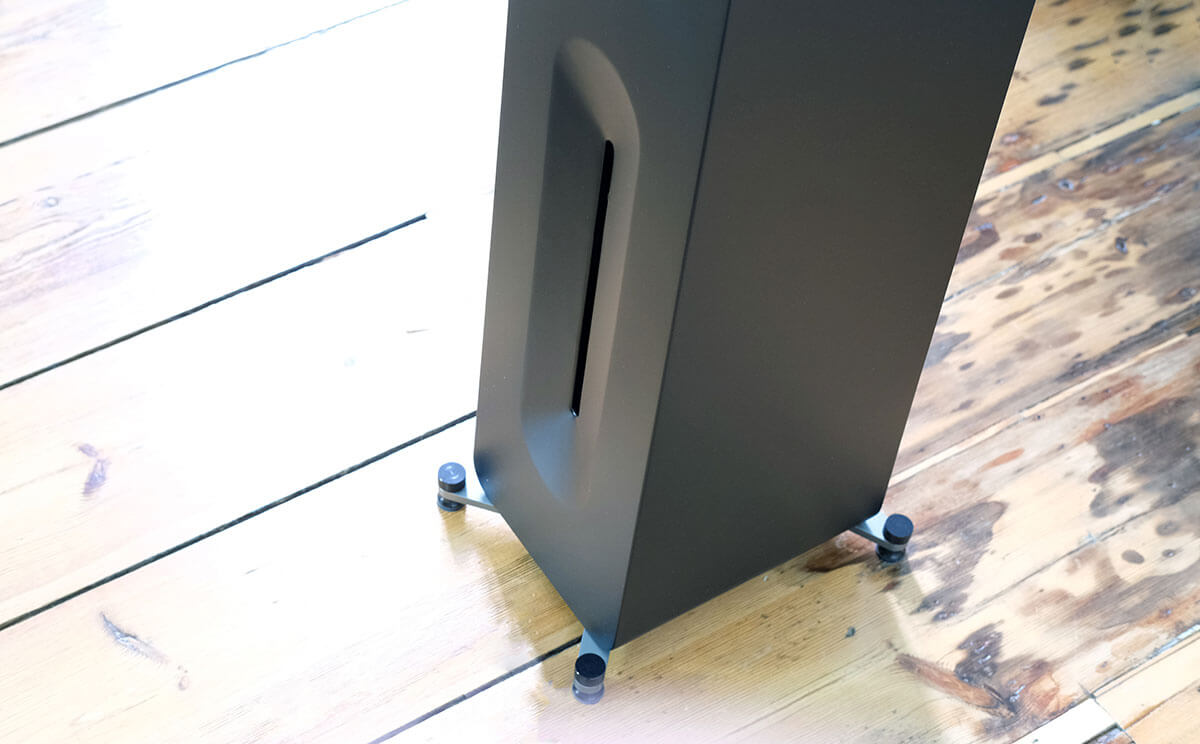
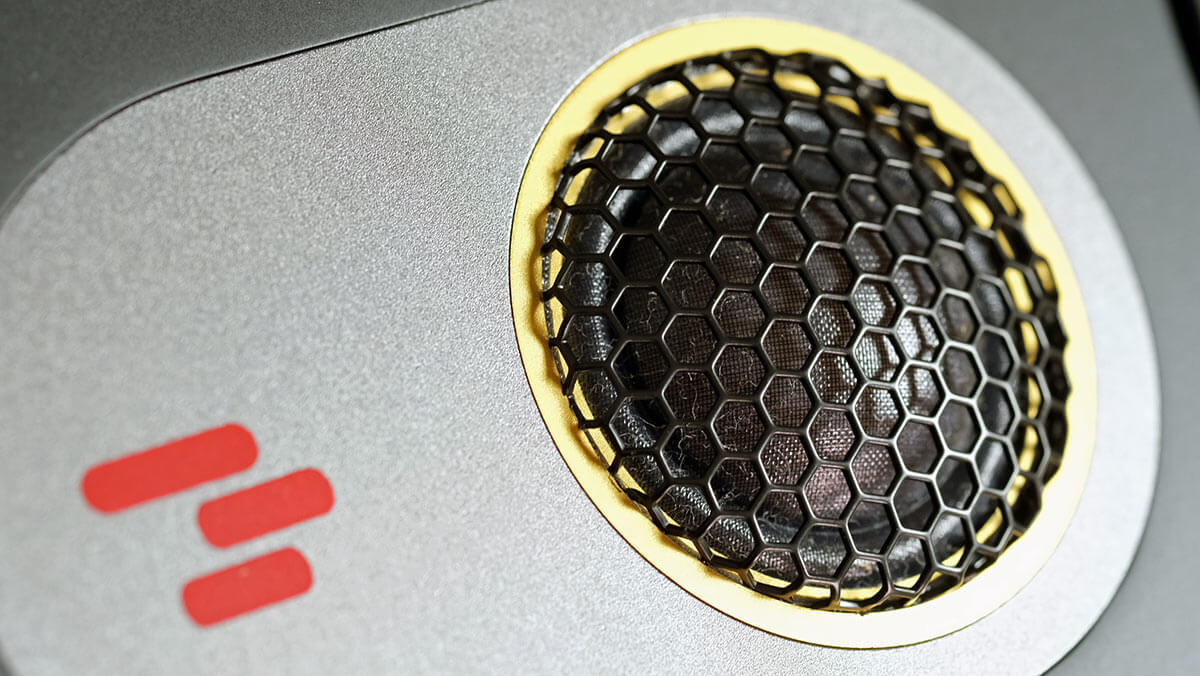

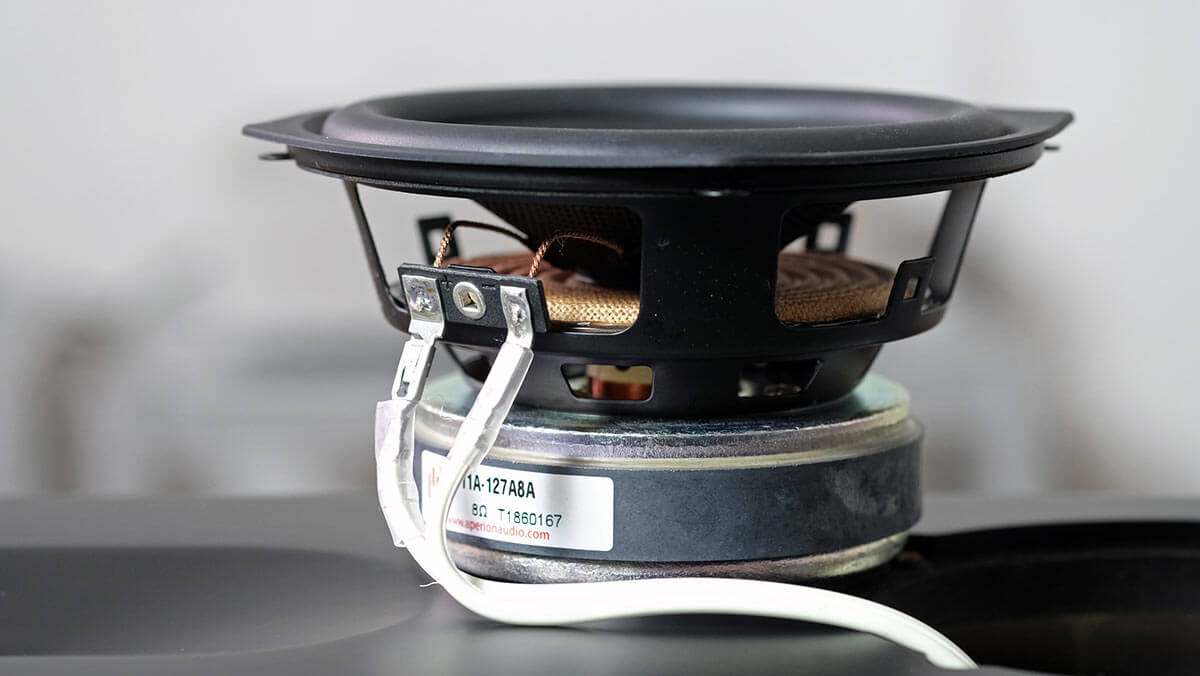

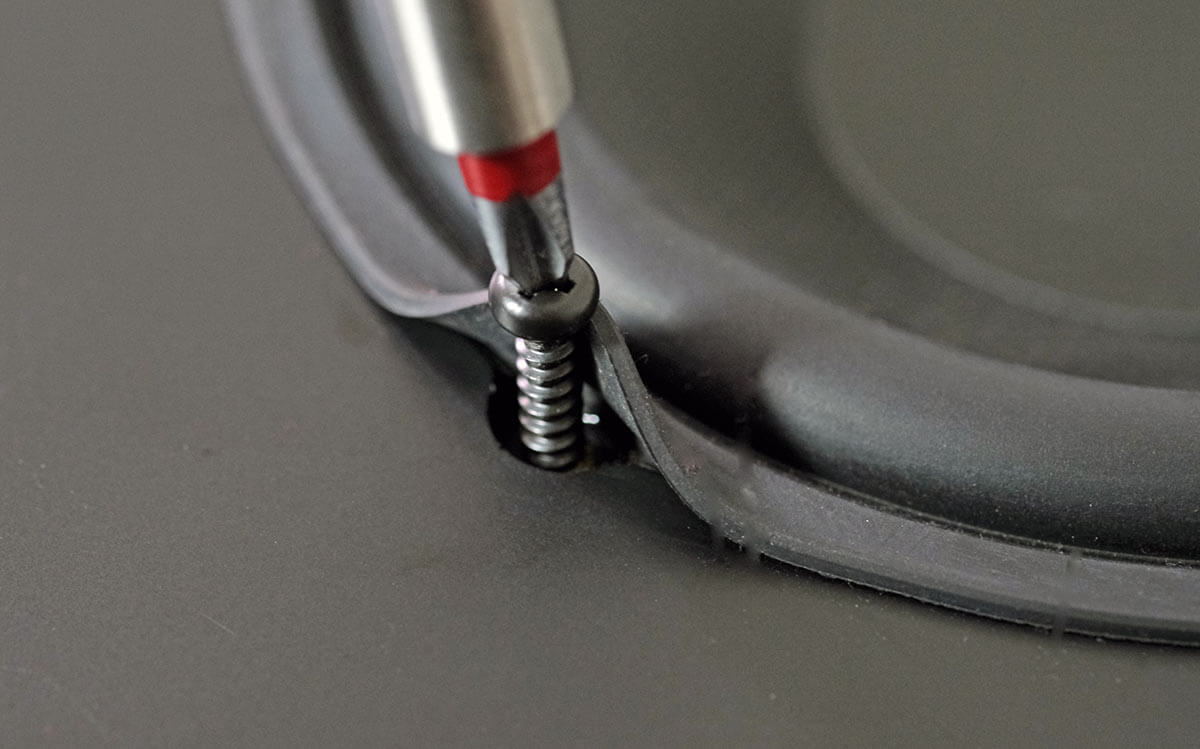

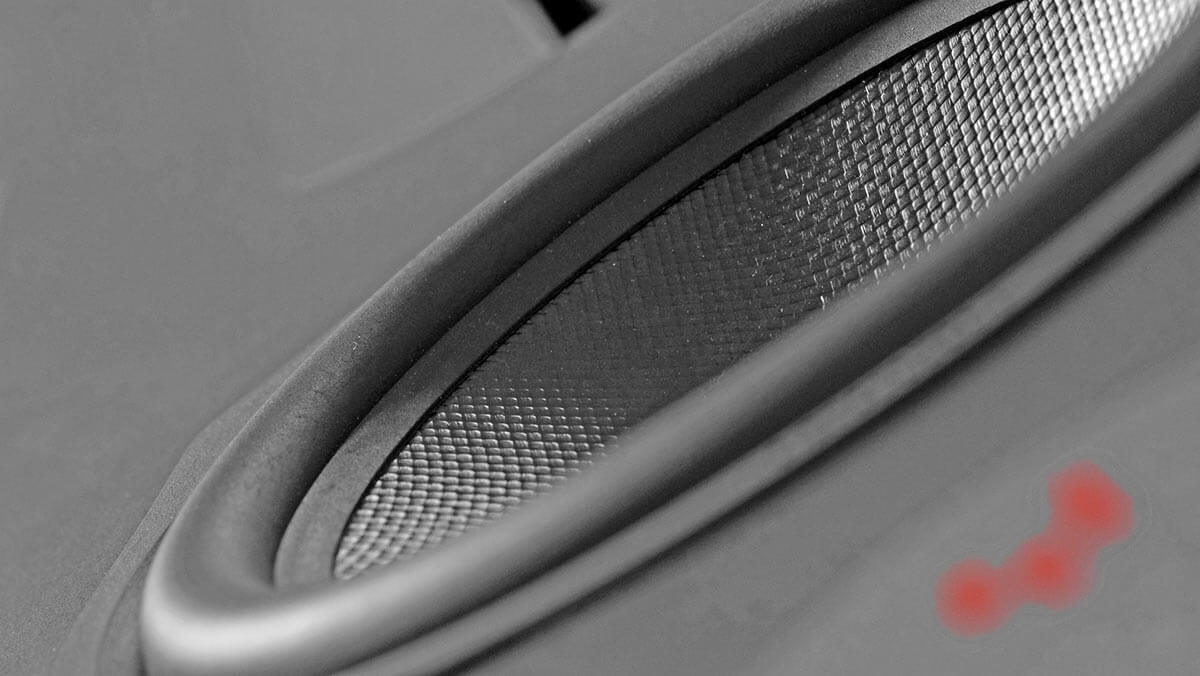
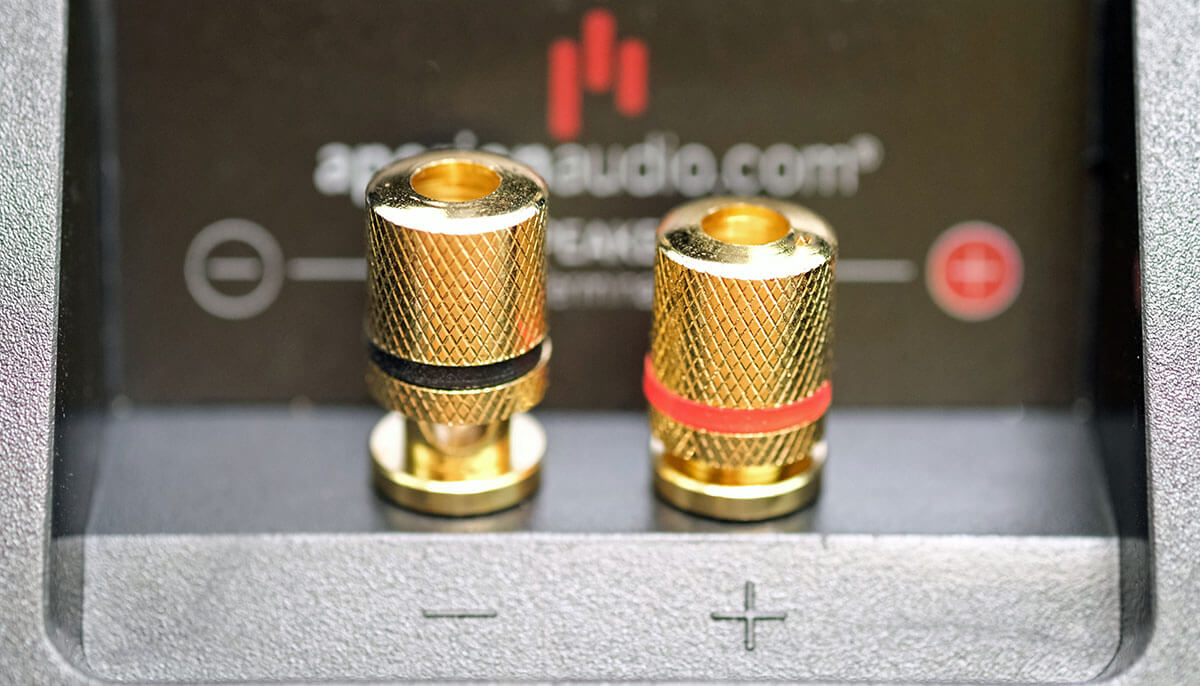
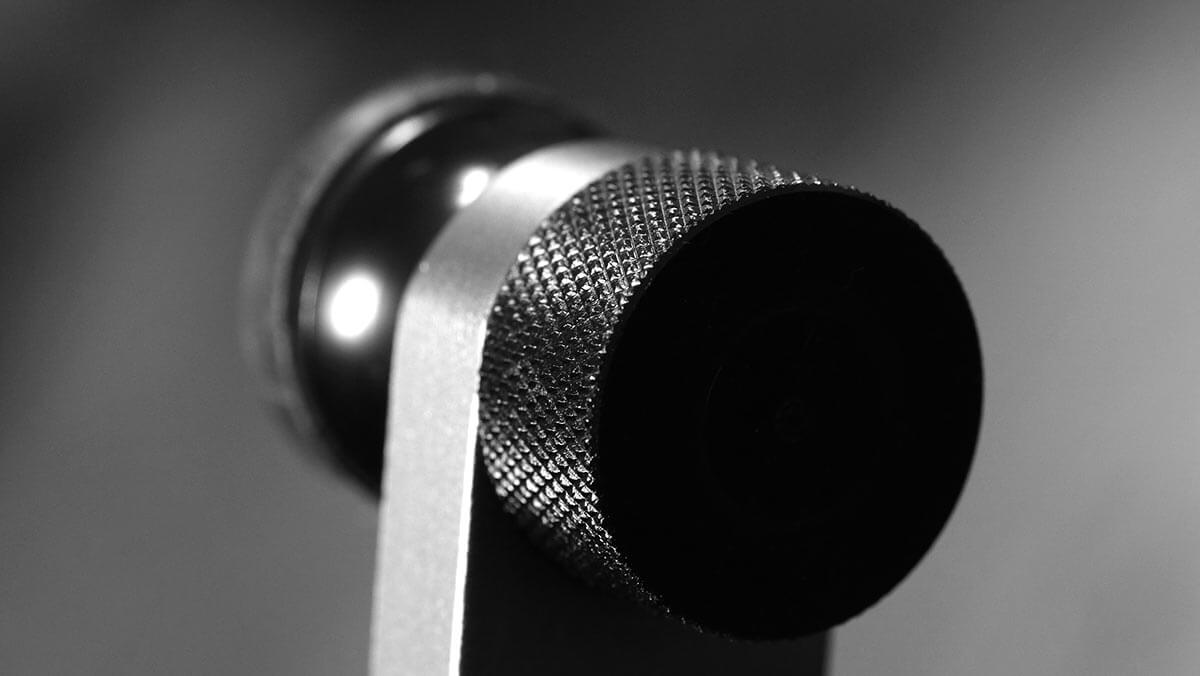
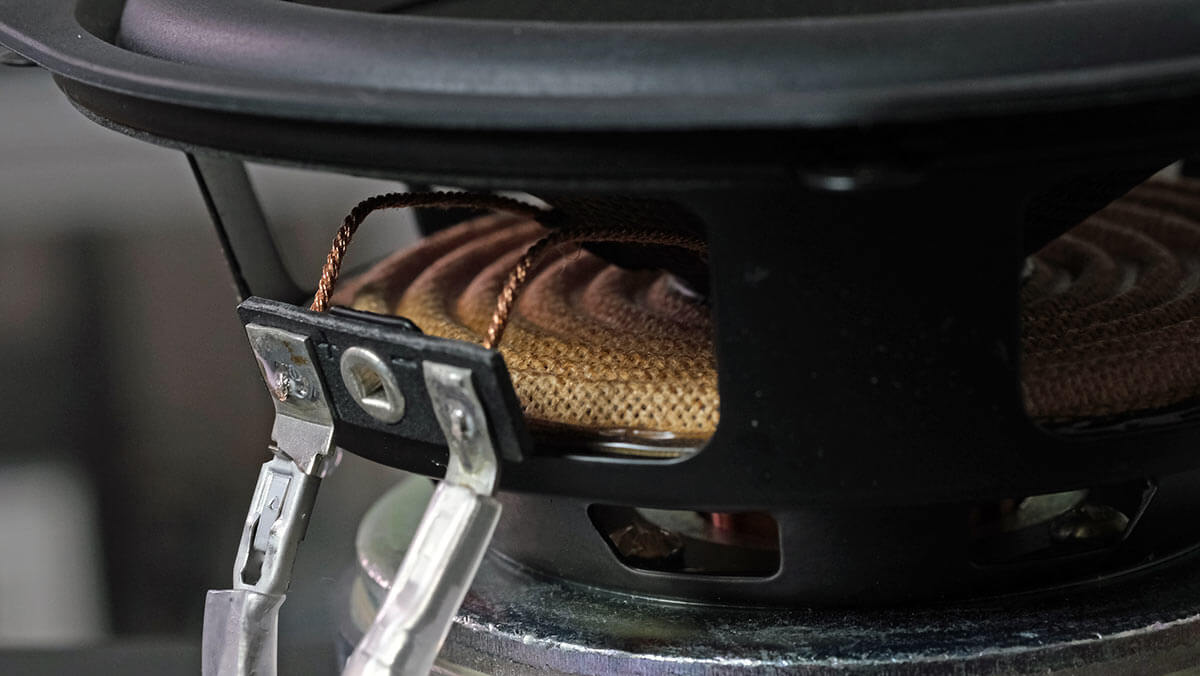
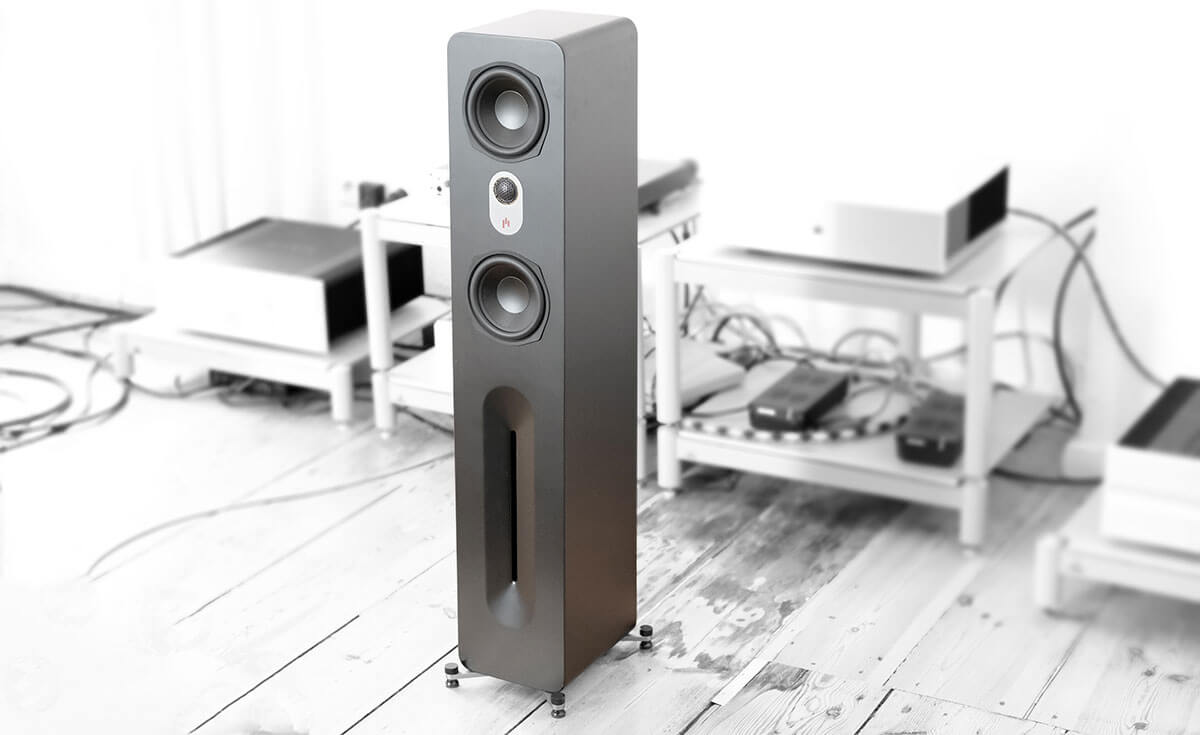



Add Comment